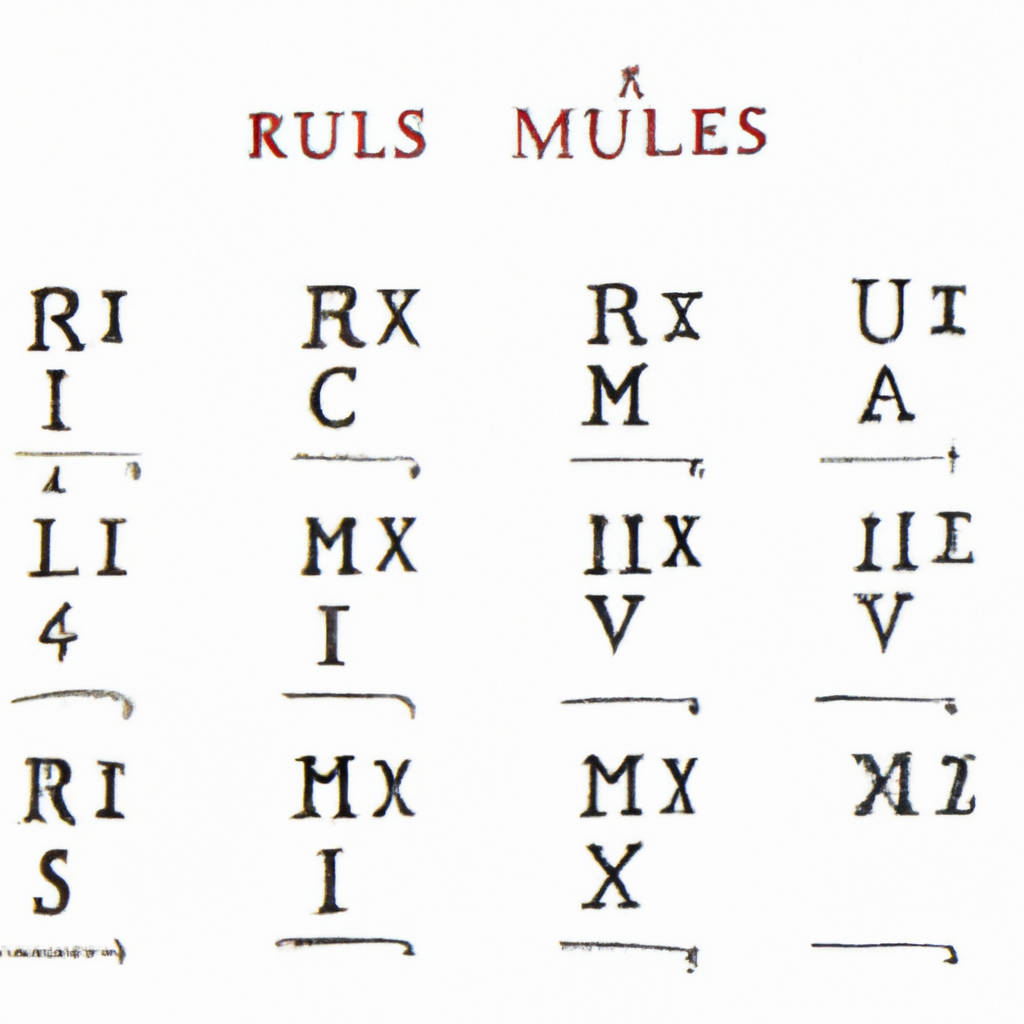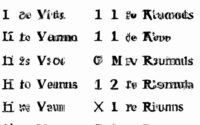Beyond XXV and XXVIII
Beyond XXV and XXVIII, there exists a realm where rules and restrictions cease to matter. In this ethereal space, individuals are liberated from the constraints of societal norms and expectations. It is a place where creativity blooms, and unconventional ideas are celebrated. Beyond XXV and XXVIII, people are encouraged to think outside the box, exploring uncharted territories and pushing the boundaries of their imaginations. There are no limits to what can be achieved here, as the shackles of conformity have been shattered, giving rise to a world filled with endless possibilities.
In this realm beyond XXV and XXVIII, innovation thrives on the notion that rules were made to be broken. It is a place where pioneers and trailblazers come together to redefine the limits of what is deemed possible. Without the burden of legality or illegality, individuals are free to experiment and challenge conventional wisdom. They are not bound by the fear of punishment or the need for approval; instead, they are driven by an insatiable curiosity and a desire to explore uncharted territories.
Beyond XXV and XXVIII, authenticity reigns supreme. In this space, there is no need for facades or pretenses. People are encouraged to be their true, genuine selves, embracing their quirks and idiosyncrasies. It is a place where individuals are celebrated for their uniqueness and encouraged to express themselves freely. Here, the pursuit of perfection is replaced by the pursuit of self-discovery and personal growth.
In this realm beyond XXV and XXVIII, success is measured not by monetary gains or accolades, but by the fulfillment one finds in their endeavors. It is a place where happiness and passion take precedence over societal expectations. Individuals are encouraged to pursue their dreams wholeheartedly, knowing that the journey itself is as valuable as the destination.
Beyond XXV and XXVIII, there exists a realm where limitations are mere illusions, and the human spirit soars. It is a place where innovation, authenticity, and fulfillment converge to create a world that transcends traditional frameworks. It is a place where individuals are empowered to break free from the constraints of the mundane and embrace the extraordinary. Here, the possibilities are infinite, and the only limits are the ones we impose upon ourselves.

Overview of the Roman Numeral System
The Roman numeral system, developed by the ancient Romans, is a numeric system that was widely used across the Roman Empire and has had a lasting impact on Western society. This system is unique in that it does not rely on the use of positional notation, unlike the Arabic numeral system commonly used today. Instead, it utilizes a combination of letters to represent numbers. The system is based on seven basic symbols: I, V, X, L, C, D, and M, which represent the numbers 1, 5, 10, 50, 100, 500, and 1000, respectively. By combining these symbols, various numbers can be represented. For example, the number 6 is represented as VI, and the number 73 is represented as LXXIII. The Roman numeral system was widely used for many centuries, particularly in the fields of mathematics, commerce, and record-keeping. However, with the rise of the Arabic numeral system, the use of Roman numerals gradually declined, although they are still occasionally used today, particularly in formal contexts such as the numbering of chapters in books or the representation of dates on buildings. The Roman numeral system provides a fascinating glimpse into the mathematical and cultural practices of ancient Rome and continues to be a part of our collective history.
Rules for Roman Numerals
Roman numerals are a system of numerical notation that was used in ancient Rome. They are still widely recognized and utilized today, particularly in the realm of formal or decorative display. Understanding and adhering to the rules for Roman numerals is essential to ensure accurate representation of numbers using this ancient system. One important rule is that the symbols should be written in a specific order, from largest to smallest value. The symbol for one, “I,” is the smallest, while the symbol for one thousand, “M,” is the largest. Another rule is that certain symbols cannot be repeated more than three times in a row. For example, the symbol for five, “V,” can only be used up to three times consecutively, beyond which it becomes necessary to use a different symbol. Additionally, a smaller symbol placed before a larger one indicates subtraction. For instance, placing “I” before “V” means subtracting one from five, resulting in the number four. Conversely, a smaller symbol placed after a larger one indicates addition. For example, placing “II” after “X” means adding two to ten, resulting in the number twelve. These basic rules for Roman numerals provide a foundation for accurately representing numbers using this ancient numerical system.

Numerals that come before and after XXV and XXVIII
Numerals that precede and follow XXV and XXVIII, two Roman numerals, showcase a fascinating array of numerical expressions that have persisted throughout history. These numerals, deeply rooted in ancient Rome, offer a glimpse into the complexity and versatility of the Roman numerical system. Prior to XXV, the numeral that precedes it is XXIV, which represents the number 24. Following XXV, we encounter XXVI, indicating the number 26. Each of these numerals contributes to a broader understanding of Roman numerals, their patterns, and the unique way in which they were utilized in various contexts.
XXIV, the numeral preceding XXV, holds significant historical and cultural importance. It represents the value of 24, which in ancient Rome held various associations. One notable example is the twenty-four-hour day, a temporal construct that the Romans embraced and divided into equal parts. Furthermore, XXIV also signifies the number of letters in the Latin alphabet, which played a critical role in shaping the language and literature of the Roman Empire. This numeral’s presence highlights the Romans’ meticulous attention to detail and their inclination towards organization and structure.
On the other hand, XXVI, the numeral that follows XXV, introduces a new aspect to the sequence. This numeral signifies the value of 26, further expanding the range of Roman numerals. Interestingly, XXVI also bears a connection to the alphabet, as it was used to represent the letter Z in ancient Rome. This association demonstrates the Romans’ ability to assign numerical values to both abstract concepts and concrete objects, showcasing their ingenuity and adaptability. The inclusion of XXVI in the sequence following XXV exemplifies the Romans’ commitment to comprehensiveness and their inclination towards linear progressions.
Beyond XXV and XXVIII, exploring the broader context of Roman numerals reveals an intricate system that stretches far beyond the limits of everyday calculations. In Roman society, these numerals were employed in various domains, such as commerce, architecture, and even law. The Roman numeral system allowed for complex calculations, as it utilized a combination of letters to represent larger numbers. For instance, the numeral C represents the value 100, while D indicates 500. By combining these numerals, the Romans could express even larger quantities, such as M for 1000 or even MMMCMXCIX for 3999. This flexibility and adaptability of the Roman numeral system enabled it to withstand the test of time and find utility in a myriad of applications.
Understanding numerals that come before and after XXV and XXVIII provides a window into the ancient Roman world and their sophisticated numerical system. These numerals, such as XXIV and XXVI, bring forth a host of historical, cultural, and linguistic associations that enrich our comprehension of ancient Rome. Beyond their mere numerical value, Roman numerals offer insights into the Romans’ organization, structure, and meticulousness. By delving into the broader context of Roman numerals, one can appreciate the complexity and versatility of this ancient numerical system, which continues to captivate and intrigue scholars and enthusiasts alike.
How to Read and Write These Numerals?
When it comes to reading and writing numerals, it is important to understand the different symbols and their corresponding values. Numerals are used to represent numbers in various contexts, such as mathematics, statistics, and everyday life. To effectively read and write these numerals, one must familiarize themselves with the basic number system. This system consists of ten digits: 0, 1, 2, 3, 4, 5, 6, 7, 8, and 9. These digits can be combined to form different numbers by following specific rules.
To read numerals, start by identifying the value of each digit in the number. The position of the digit determines its value within the number. The rightmost digit represents the ones place, the next digit to the left represents the tens place, and so on. For example, in the number 456, the digit 6 is in the ones place, the digit 5 is in the tens place, and the digit 4 is in the hundreds place. By understanding the position of each digit, one can determine the overall value of the number.
Writing numerals involves the reverse process of reading them. Begin by identifying the value of each digit in the number you want to write. Then, assign the appropriate digit to each place value. For instance, if you want to write the number seven hundred sixty-two, you would assign 7 to the hundreds place, 6 to the tens place, and 2 to the ones place. In this way, you can accurately write numerals based on their corresponding values.
When dealing with larger numbers, it is important to understand the concept of place value and the use of commas to separate the different place values. In the United States, commas are used as a visual aid to group numbers by thousands. For example, the number 1,234,567 is read as “one million, two hundred thirty-four thousand, five hundred sixty-seven.” By using commas to separate the thousands, millions, billions, and so on, reading larger numerals becomes easier and less prone to errors.
Decimal numbers, on the other hand, introduce a new element to reading and writing numerals. The decimal point is used to indicate the division between the whole number and the fractional part. For instance, in the number 3.14, the digit 3 is the whole number, and the digits 1 and 4 represent the fractional part. To write decimal numbers, place the decimal point in the appropriate position to indicate the division between the whole number and the fraction. For example, if you want to write the number three and a half, you would write 3.5, with the decimal point indicating the division between the whole number and the half.
In conclusion, reading and writing numerals involves understanding the basic number system, place value, and the use of commas and decimal points. By familiarizing oneself with these concepts, one can accurately read and write numerals in various contexts. Whether it is for mathematical calculations, statistical analysis, or simply understanding numerical information in everyday life, mastering the skill of reading and writing numerals is crucial. So, practice regularly and keep these principles in mind to become proficient in this essential skill.




